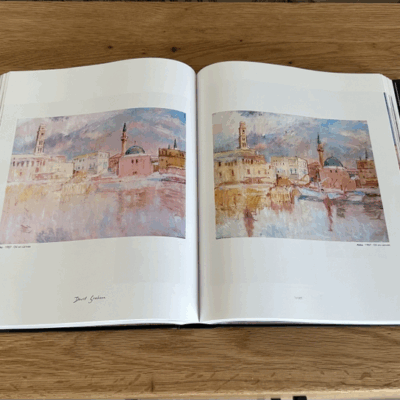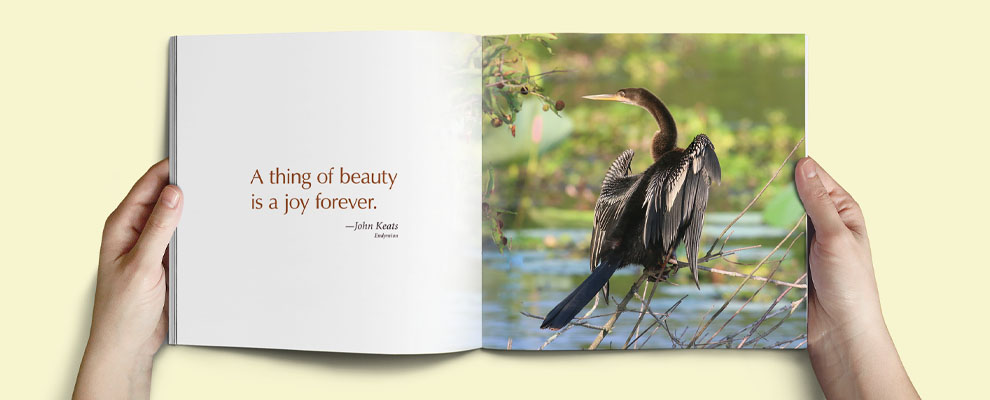Unique Features That Add Value to Your art book
Unique Features That Add Value to Your art book
Blog Article
Discover the Crucial Guide to Art Book Printing for Aspiring Artists and Publishers
As an ambitious artist or author, understanding the subtleties of art book printing is essential to bringing your vision to life. You'll require to take right into account various variables, from choosing the ideal sort of book to guaranteeing shade precision and selecting appropriate products. Each decision impacts the end product greatly. So, what are the essential components you should concentrate on to produce a magnificent art book that truly represents your work?
Understanding Various Kinds Of Art Books
When you dive right into the globe of art publications, you'll quickly discover that they come in various types, each tailored to different creative expressions and audiences. Coffee table books typically display sensational visuals, excellent for informal surfing, while essays dive deep right into a private musician's work, offering context and insights. If you're interested in particular art motions, exhibition brochures offer detailed documentation of programs, including essays and reviews.
For instructional purposes, art guidebooks and technique publications lead you via various tools and styles, making them vital for aspiring musicians. Each style offers its objective, and recognizing their distinctions can improve your art book trip.
Selecting the Right Paper and Products
Choosing the ideal paper and products can substantially affect the overall quality and feel of your art book. Beginning by thinking about the sort of artwork you have. For vivid colors and detailed details, choose a shiny finish or a heavyweight matte paper that boosts visual deepness. If your job features softer tones or textures, a natural or uncoated paper can supply a warm, welcoming touch.
Think of the weight of the paper, as well. Thicker choices usually provide an even more specialist look, while lighter documents can lower printing prices. Don't ignore the binding products; a tough cover can protect your pages and include in guide's aesthetic.
Lastly, think about sustainability. Green options are obtaining popularity and can mirror your values as a musician. By carefully picking your paper and products, you'll ensure that your art book not just looks excellent yet additionally really feels special in the hands of your readers.

Choosing the very best Printing Strategies
When it involves publishing your art book, picking in between countered and digital printing can significantly influence your end product. You'll additionally want to take into consideration just how paper quality impacts the overall look of your art work. Let's check out these key printing strategies to find the very best suitable for your task.
Balanced Out vs. Digital Printing
While both balanced out and digital printing have their advantages, picking the best strategy for your art book can considerably affect the last item. Countered printing uses high-grade pictures and lively colors, making it ideal for larger print runs. Inevitably, your selection should straighten with your imaginative vision and circulation approach, ensuring that your art book mirrors the top quality you desire.
Paper Top Quality Factors To Consider
Picking the appropriate paper top quality can considerably boost the visual allure and tactile experience of your art book. For prints, a shiny coating can make images pop, while a matte coating offers a softer, extra refined look.
Following, believe concerning the sustainability of your option. Eco-friendly choices are ending up being increasingly popular and can interest environmentally-conscious readers. Request examples to see just how different papers function with your artwork, ensuring the final product shows your vision completely.
Making Sure Color Precision in Your Prints
To achieve spectacular prints, you need to concentrate on shade accuracy from the beginning. You'll intend to use shade calibration strategies to validate your display and printer are in sync. Additionally, proofing your job prior to the final print run can aid capture any type of inconsistencies, ensuring your art looks simply as you pictured.
Color Calibration Techniques
Assuring color precision in your prints begins with efficient color calibration strategies that help preserve uniformity in between your electronic photos and last printed products. Adjust your display making use of hardware calibration tools to achieve the best color representation. This verifies that what you see on-screen suits what obtains published. Next off, select a shade profile fit for your printing procedure, like CMYK for print materials. Regularly check your printer's settings and maintain it to avoid color changes. It's additionally important to utilize premium paper that matches your inks, as various surface areas can greatly influence shade outcome. By constantly using these methods, you'll enhance the overall quality of your art prints and far better share your creative vision.
Proofing for Precision
While you could assume your electronic images await print, proofing is important for achieving shade precision. Before committing to a complete print run, always request an evidence from your printer. This enables you to see how shades convert from display to paper. Compare the proof with your calibrated monitor to identify any kind of discrepancies. Take note of saturation, illumination, and shade, as these elements can considerably affect your end product.
If changes are needed, interact plainly with your printer regarding your wanted outcomes. Do not hesitate to demand multiple proofs if needed; it's worth the financial investment to get it. Inevitably, thorough proofing assurances that your art work is stood for as you envisioned it, preserving your imaginative honesty throughout the printing process.

Creating Layouts That Enhance Your Art Work
When you make formats for your art book, it's vital to contemplate how each element communicates with your artwork. Go for a balance between visuals and text, guaranteeing neither eclipses the read here other. Use white space strategically; it gives your art work area to take a breath and accentuates its information.
Think about the circulation of your book. Set up photos in a manner that guides the visitor's eye, creating a narrative or thematic progression. art book. Vary the dimensions and orientations of your art work to keep the layout dynamic and fascinating
Select font styles that complement your artwork without distracting from it. Maintain text concise and appropriate, providing context or insight that boosts the audience's experience.
Finally, test various designs. Publish samples to see exactly how the designs translate theoretically, and adjust as required. By attentively developing your layouts, you'll produce a visually engaging art book that reverberates with your audience.
Binding Alternatives for a Specialist Finish
Picking the right binding choice can considerably impact the total presentation of your art book. You'll desire to take right into account both aesthetic appeals and resilience when making your option. Popular options consist of ideal binding, which supplies a smooth appearance and is ideal for thicker publications; saddle stitching, suitable for smaller sized brochures; and spiral binding, which permits pages to lay level for easy watching.
If you're going for a premium feeling, case binding is an exceptional choice, supplying a sturdy cover and an expert appearance (art book). Don't ignore the cover material; alternatives like cloth, leather, or a glossy coating can boost your book's appeal
Whatever choice you choose, ensure it enhances your artwork and enhances the visitor's experience. Take your time to consider the pros and cons of each technique, so your end product reflects the high quality of your imaginative vision.
Preparing Your Files for Print Readiness
To ensure your art book is print-ready, you'll require to pay close focus to file preparation. Begin by establishing your record dimension to match your desired print dimensions. Use high-resolution pictures-- 300 DPI is the criterion-- to identify sharp, vibrant visuals. Convert your files to CMYK mode, as this color area is finest for printing. Do not Go Here neglect to consist of hemorrhage locations, usually an extra 0.125 inches around your pages, to stop any type of white sides after trimming.
Likewise, embed your fonts or convert text to outlines to avoid any font concerns. Conserve your job in a PDF style, as this is one of the most approved documents kind for printers. Verify your declare any type see post of typos or layout errors, as changes can be costly after the reality. Ultimately, take into consideration developing an evidence to evaluate before the last print run. Following these actions will certainly assist you achieve a sleek, specialist art book.
Often Asked Questions
What Is the Ordinary Expense of Publishing an Art Book?
The average price of printing an art book differs, however you can expect to pay anywhere from $5 to $20 per duplicate, depending upon factors like dimension, paper high quality, and printing quantity.
Exactly How Can I Find a Reliable Printing Firm?
To discover a trustworthy printing company, beginning by researching on-line reviews and asking other artists for suggestions. Compare quotes, inspect profiles, and interact your demands clearly to assure they comprehend your vision and top quality expectations.
What Is the Regular Turnaround Time for Printing?
The normal turnaround time for printing varies yet usually ranges from one to 4 weeks. Elements like task intricacy and volume can impact this. Always verify with your selected printer for certain timelines and expectations.
Can I Print My Art Book in Limited Quantities?
Yes, you can most definitely print your art book in restricted amounts. Many printing business supply short-run options, enabling you to create simply the number you need, making it simpler to take care of prices and inventory.
What Legal Factors To Consider Should I Know for My Art Book?
You need to consider copyright, licensing contracts, and model launches when developing your art book. Make sure you can make use of all photos and message, protecting yourself from prospective legal problems later on.
Report this page